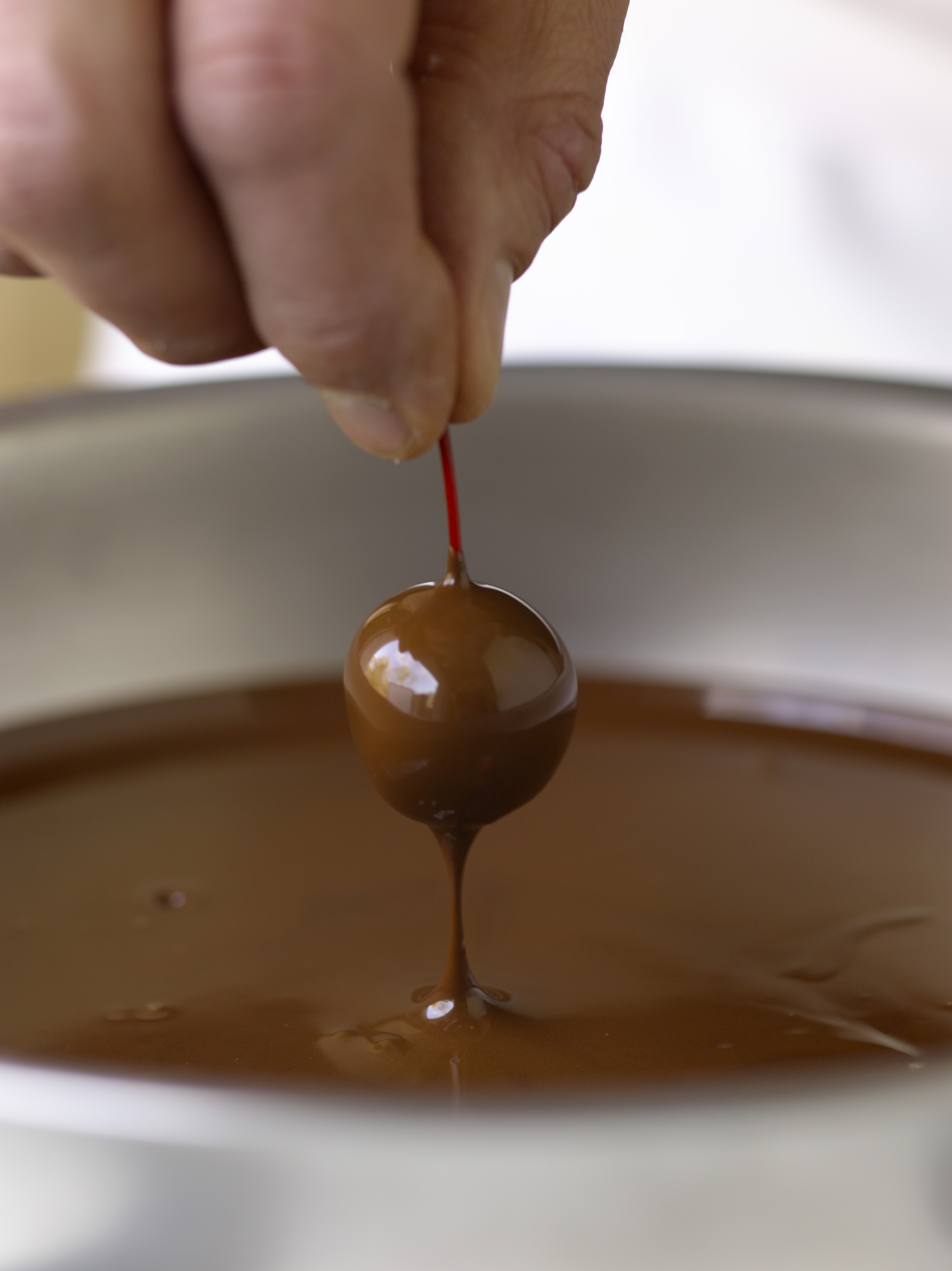 Image credit: The Culinary Institute of America
Image credit: The Culinary Institute of America
Nutrition, medical and culinary experts share their tips on how to mindfully eat chocolate for greater enjoyment and better health.
Mindful eating is the opposite of mindless eating, said Lilian Cheung, a registered dietitian, co-author of Savor: Mindful Eating, Mindful Life, and director of health promotion and communication at the Harvard School of Public Health in Boston, Mass.
"Mindful eating goes beyond eating," she said, explaining that it includes making informed, healthy food choices, cooking modest portions, and slowly savoring your meal.
Studies show that mindful eating can prevent overeating and improve weight loss, she said.
Certain types of chocolate can be good for your health.
"Cocoa is rich in flavanols," said Dr. Helen Delichatsios, an internal medicine physician at Massachusetts General Hospital, a teaching affiliate of Harvard Medical School, in Boston. "These are thought to mediate the beneficial effects of chocolate."
Flavanols are antioxidant compounds that can improve cognition, lower blood pressure and increase circulation, she said.
"Dark chocolate has the most [flavanols]," she added. "White chocolate has none. It doesn't have any cocoa."
Buy high-quality chocolate.
When shopping for high-quality chocolate, it helps to understand how chocolate is made, food experts say.
All chocolate comes from the cocoa bean, which is grown in the tropics, said Stephen Durfee, a pastry chef instructor at the Culinary Institute of America at Greystone, in St. Helena, Calif.
Cocoa beans are roasted and ground up to make 'chocolate liquor,' which consists of cocoa solids and cocoa butter, he said. Sugar is then added in varying quantities to offset the bitterness of the chocolate liquor.
"'Couverture' is the term used to describe high-quality chocolate, which is made purely from real cocoa beans and cocoa butter," he said. "This is used to create glossy, thin-shelled confections."
"Compound chocolate is often referred to as 'candy bar' chocolate," he said. "It's a by-product of manufacturing high-quality chocolate."
Compound chocolate has some of the cocoa butter removed and replaced with shortening, he explained, adding that this chocolate is cheaper, doesn't melt at higher temperatures, and has a longer shelf life.
Read the nutrition label on chocolate.
To tell the relative sweetness or bitterness of chocolate, look at the ratio of chocolate to sugar, Durfee said.
"If you buy chocolate with a higher cocoa content, it will be less sweet," he said. "You will get more of the natural flavor of chocolate."
The chocolate percentage tells you how much real cocoa was used, he said. When you take that number, subtract it from 100, and the remaining number tells you how much sugar was added.
"When a package states '70 percent chocolate,' it indicates that the remaining 30 percent is sugar," he said.
Find out where your high-quality chocolate comes from.
The origin of the cocoa beans can influence the final flavor of chocolate, Durfee says.
"As with wine, chocolate made from beans grown in select regions of the world reflect the 'terroir' or sense of place of that region," he said. "Soil conditions, climate, the lay of the land as it meets the sun -- all influence subtle differences in flavor."
You might taste flavors of cherries and plums in chocolate made from cocoa beans grown in the Ocumare Valley in Venezuela, he said.
"Acidic soils produce a citrus flavor that is quite noticeable," he said, adding that this soil type gives a lighter color to the chocolate made from cocoa beans from the Sambirano Valley in Madagascar.
Cocoa beans grown in the Guayas River Basin in Ecuador produce chocolate with flavors of jasmine and wildflower and hints of smokiness and spice, he said.
Eat small amounts of chocolate.
Chocolate is high in calories and can lead to weight gain, Delichatsios said.
To limit your chocolate intake to a healthy amount, try eating just one square of dark chocolate or having fruit dipped in dark chocolate sauce, she suggested.
Use chocolate sauce or flakes instead of sugar to sweeten desserts.
"If we want to make our desserts more healthful, rely less on sugar," Durfee said. "Serve it with a sauce. Use chocolate."
He explains one easy way to make chocolate sauce is to add 100 g of high-quality chocolate to 100 ml of boiling water.
"Allow the chocolate to melt," he said. "Puree with a small handheld kitchen immersion blender."
"Keep it in the refrigerator," he said, adding that this sauce can be stored for weeks.
Another creative use of high-quality chocolate is to use a box grater to create chocolate flakes, he added. "Use it to add seasoning to food," he said. "A little flavor goes a long way."
Allow high-quality chocolate to melt in your mouth before chewing.
High-quality chocolate contains cocoa butter, which liquifies at body temperature and produces a 'melt in your mouth' sensation, Durfee says.
"Let chocolate melt on your tongue for a few seconds before you start to chew," he said. "As the warmth of your mouth softens the chocolate, you will notice a real explosion of flavor."
If you are trying out different chocolates at once, have some crackers and water handy to cleanse your palate between tastings, he said.
Use all five senses when you eat chocolate.
"Food is much more enjoyable when eaten mindfully," Cheung said.
Look at the color, smell the aroma, notice the texture and taste, and listen to the sound chocolate makes when you chew it, she advised.
Disclosure(s): Julielynn Wong, MD, was a Frank Knox Memorial Fellow while earning her Master of Public Health degree from the Harvard School of Public Health. Dr. Wong has no investments or direct commercial relationships with products in this article.
For more by Julielynn Wong, M.D., click here.
For more on diet and nutrition, click here.